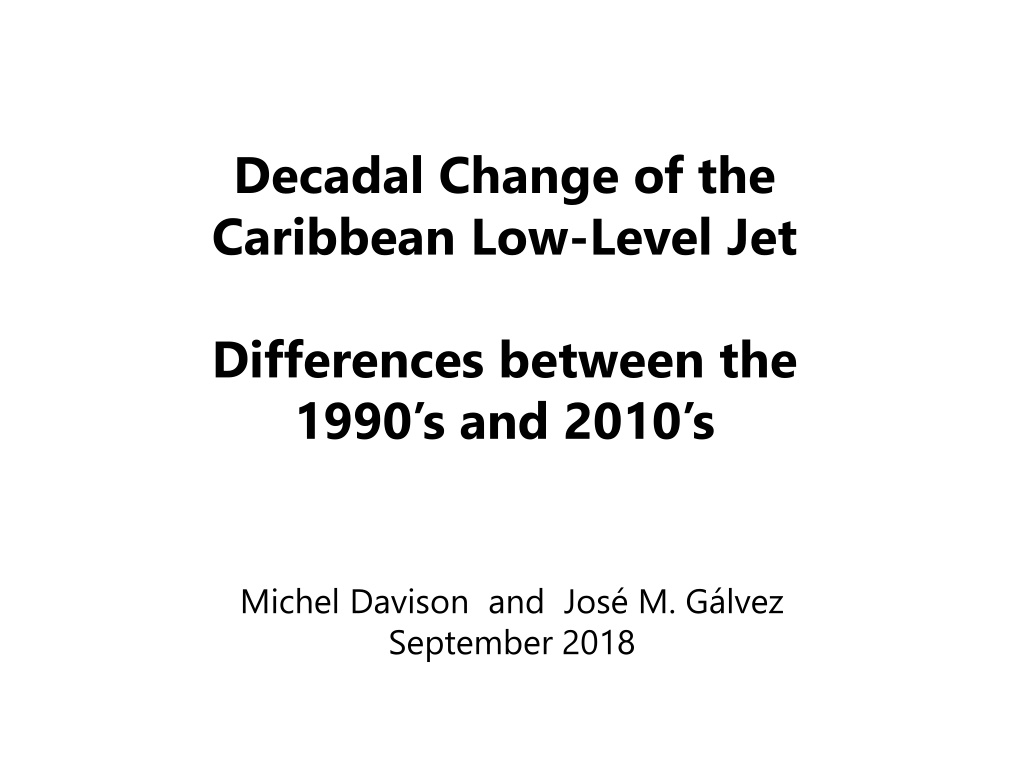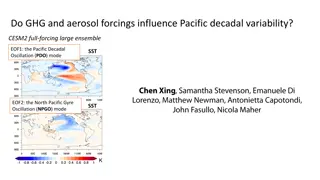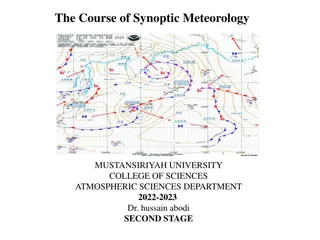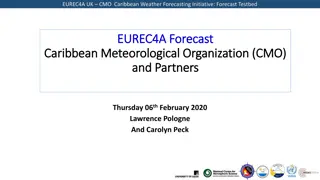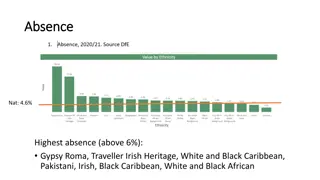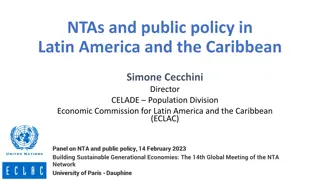Decadal Changes in Caribbean Low-Level Jet and Atmospheric Dynamics
Analysis of decadal changes between the 1990s and 2010s in the Caribbean region focusing on the low-level jet, rainfall patterns, 925 hPa geopotential, winds, and surface temperatures during dry and rainy seasons. Significant variations observed in wind strengths, pressure gradients, and surface temperatures indicate possible impacts on regional climate dynamics. The study provides insights into the evolving atmospheric conditions in the Caribbean and adjacent regions over the past few decades.
Download Presentation

Please find below an Image/Link to download the presentation.
The content on the website is provided AS IS for your information and personal use only. It may not be sold, licensed, or shared on other websites without obtaining consent from the author. Download presentation by click this link. If you encounter any issues during the download, it is possible that the publisher has removed the file from their server.
E N D
Presentation Transcript
Decadal Change of the Caribbean Low-Level Jet Differences between the 1990 s and 2010 s Michel Davison and Jos M. G lvez September 2018
925 hPa Geopotential Dry Season (Feb-Mar) 90 s 10 s The 925 hPa geopotential gradient between northern Panama and the northern Bahamas increased in 8 GPM. Cause: simultaneous increase in the pressure/geopotential in the northern Bahamas/Florida and decrease of tropical pressures/geopotentials. Figures below show: Stronger Atlantic ridge building into the Gulf of Mexico. Decrease in pressures across most of the tropical Pacific and northwestern South America.
925 hPa Winds Dry Season (Feb-Mar) Consistent with a tighter 925 hPa geopotential gradient, winds were stronger in the 2010 s compared to the 1990 s. Figures show, according to NCEP/NCAR Reanalyses: The Caribbean Low-Level Jet >3 m/s (~6kt) stronger. Winds near/south of Panama >1.5 m/s (~3kt) stronger. It is posible that the differences are larger in higher-resolution datasets.
Surface (Skin) Temperature Dry Season (Feb-Mar) Difference shows warming in the Caribbean and Little change in Pacific SSTs. Pacific SSTs show stronger low-level jet signatures in the areas of upwelling- produced cooling and warming, which is consistent with stronger winds. The changes in winds and pressure in synoptic scales do not clearly respond to changes in SSTs.
925 hPa Geopotential Rainy Season (Jul-Ago) 90 s 10 s The 925 hPa geopotential gradient between Panama and the northern Bahamas increased in 6 GPM. Cause: Decrease in tropical pressures/geopotentials. Atlantic pressures/geopotentials also decreased but to a lesser extent. Lower figures show: The most significant decreases in geopotential along the Panama-Bahamas transect occur in the Southern Caribbean/northwest Colombia.
925 hPa Winds Rainy Season (Jul-Ago) Acceleration of 925 hPa winds between Panama and the Bahamas in the 2010 s with respect to the 1990 s. Figures show: Caribbean LLJ ~1 m/s (~2kt) faster in the 2010 s Winds near/north of Panama ~1 m/s (~2kt) faster in the 2010 s.
Surface Temperature Rainy Season (Jul-Ago) Both basins show an increase in SST s, especially the Caribbean. Largest increases near Central America. This one factor is consistent with the acceleration of the Caribbean trades, and increase in the westerly component across the Pacific. The SST change alone does not explain the decrease in pressures in the Southern Caribbean. Might the warming in Colombian skin temperatures play a role on this (research needed)?
